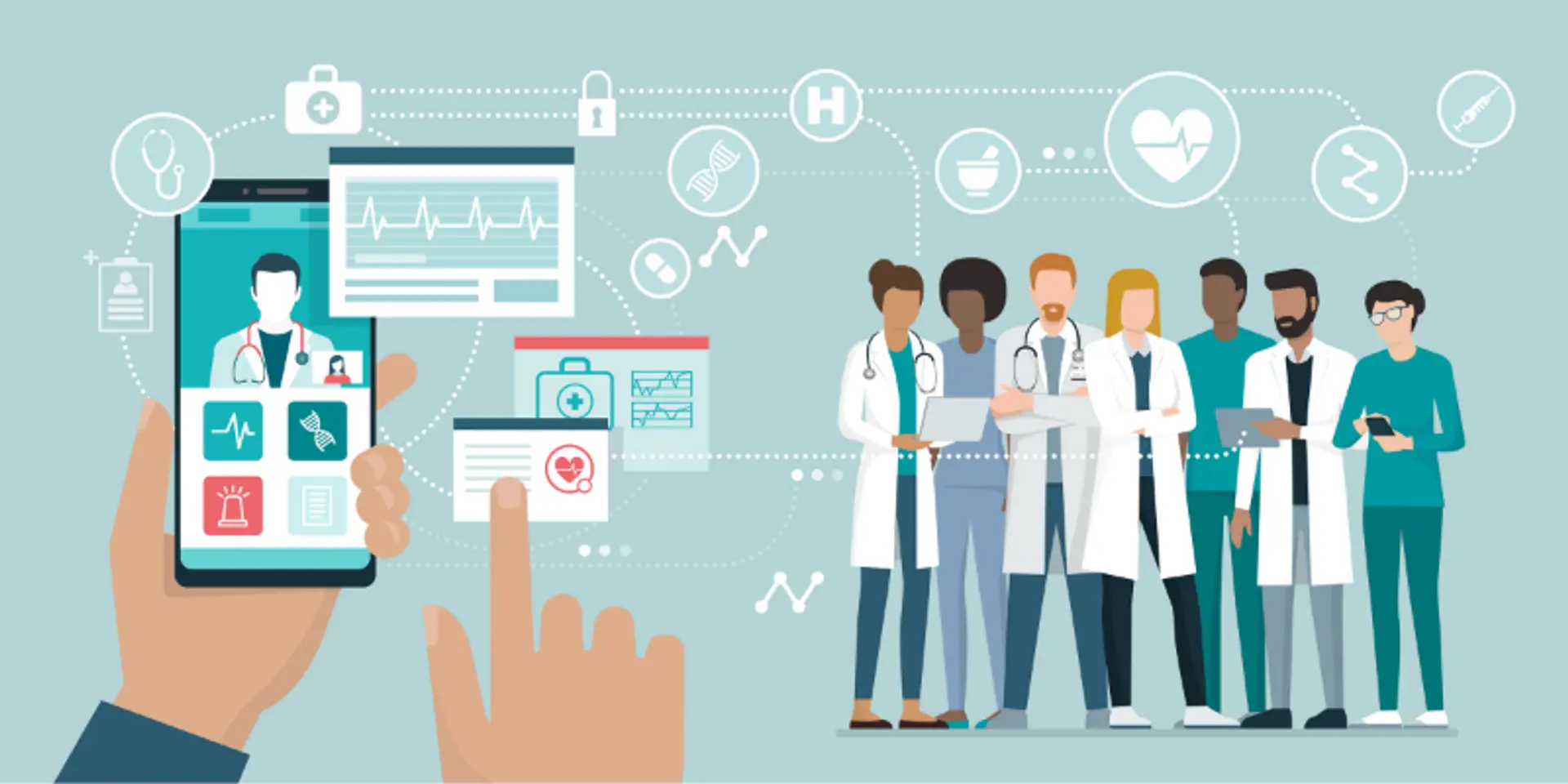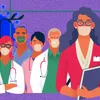A New Era for Healthcare
Prasad Kompalli, CEO & Co-Founder, Mfine, talks about how digitisation of healthcare delivery can ensure better reach and affordability.
A 39-year-old man from a small town in Odisha had high levels of HbA1c (glycated haemoglobin) of 7.6. Thanks to telemedicine, he was able to bring it down to 5, and stop his diabetes medicines altogether. And this happened without even once meeting a medico in person!
In a remote village near Khammam in Andhra Pradesh, a one-year old child suffered a skin burn on a Sunday night. The nearest hospital was 40 kms away, so the parents reached out to a pediatrician via telemedicine. The doctor was able to consult the parents through a video call, assess the severity, prescribe medication, suggest steps for further care, and watch out for warning signs over the next few days.
Post the COVID-19 outbreak, consumer adoption of telemedicine accelerated, and it is now playing a big role in delivering better health outcomes for people using technology that is connected, clever and convenient. The vision of making quality healthcare accessible has now been enhanced to enabling better health for all.
In a country with one specialist doctor for every 5000 people, and five hospital beds for every 10,000 persons, the current system is unsuited at large for ensuring health of people and delivery of care that’s effective.
How can a system where the nearest point of care is always tens of kilometers and hours/days away be suitable for treating children, seniors, expecting mothers and many in need of attention?
How can a system devoid of consistent data and thorough analysis be suitable for addressing the growing menace of non-communicable diseases (NCDs) and chronic conditions. How can a system that incessantly subjects doctors and other healthcare workers to 15+ hour workdays be suitable for delivering deeply thought-through care and meticulous follow-ups?
The good news though is that a new method is evolving to deliver healthcare. There is a huge opportunity in India to leapfrog developed nations in healthcare delivery.
India can leverage smartphone penetration and combine that with AI to create massively scalable and efficacious healthcare delivery. Eventuality has already arrived. It’s this new normal we need to build the healthcare delivery for.
Mobile – much more than a (video) call
We think local diagnostics and on-the-cloud diagnosis with an integrated experience is the model of the future. Doctors’ location should matter less for healthcare delivery other than where physical/surgical interventions are involved. India has 100,000 labs covering pathology/biochemistry to imaging diagnostics.
We can drive a lot more of early detection, thorough follow-up, and data-based decisions by integrating the data flow between local labs and on-the-cloud doctors/hospitals. But this is not enough.
We see telemedicine transform into something much more capable when it moves from a desktop computer in a PHC to an app on a smartphone in the hands of the users/patients. Powerful sensors on the mobile combined with ML algorithms on the device and on the cloud, transform mobiles into a diagnostic device.
Apart from structured text inputs that users give on describing the ailments, we have seen success in capturing various important signals in all forms - acoustics to images and videos. We have been able to process cough sounds, and AI is able to classify those into various diseases-causes, process light spectrum in the video taken on the phone to determine oxygen saturation levels, analyze consumer grade skin images and classify into various possible skin ailments.
We are taking things further like heart rate monitoring, breathlessness detection, gait analysis, and image processing to digitise diagnostic reports etc. all on the mobile itself. As you can imagine, the users’ and doctors’ experience are completely redefined with this approach of treating mobile as a diagnostic device.
Health as OTT
When doctors are enabled with thorough data and technology that can assist them in diagnosing, monitoring, alerting through the treatment period, the efficiency and effectiveness go up by orders of magnitude.
Telemedicine has helped us create an experience for the users that’s on-demand and one that captures data of the users in an easy manner with the help of the tools on the device. For the doctors, all the patient data collected are summarised and also a differential diagnosis and a treatment plan is presented.
A feedback loop from the doctors to the ML algorithms makes sure of the accuracy and scalability of this mode of care delivery, a combination of a learning machine and an expert doctor. AI is also able to add the most significant aspect of coaching, without effort from the doctors, to the entire treatment process.
In the very near future, the expertise that the machine is learning from the doctors can be brought to the users in the form of self-assessments and other DIY tools like prescription reminders, medical and lifestyle advice and nudges to maintain good health. This is an era of healthcare experience that’s akin to streaming: on-demand, personalised and always-connected.
My Health Data
One of the most significant changes that will happen with the recently announced National Digital Health Mission (NDHM) and Health ID initiatives is that health data ownership moves to its owner that is the citizen/patient.
The ownership and digitisation of data means ability for people to easily carry data across providers, privacy and security. This is particularly important to scale quality of care delivery as doctors can look into and understand historical data, and take the right calls on the course of action.
The data vault in everyone’s ownership makes it easy to take a second opinion, or to shift between different care providers without losing context. This digitisation opens up opportunities in the financial support people can get including insurance, loans for medical care etc.
Future
We can always pontificate about poor doctor-patient ratio and we can always point to missing physical facilities. However, the future need not be a linear extrapolation of the past. We can get 5x doctors’ capacity with the addition of powerful AI to assist existing doctors.
We can integrate and digitise the data from various diagnostic tools/labs including that from the smartphone itself and empower people to own their health data, maintain good health and recover from sickness fast.
A subscription model for such a delivery of healthcare can also create the right incentive structure to move people and providers towards preventative care, reducing expenses and increasing effectiveness.
We are imagining and building towards a future where point of care moves closer and literally into the hands of everyone, cost of care is reduced owing to early detection and on-demand management of health. When we routinely come across amazing examples of redefining healthcare delivery, a famous quote keeps ringing in my head - ‘the future is already here but is unevenly distributed’.
Edited by Anju Narayanan
(Disclaimer: The views and opinions expressed in this article are those of the author and do not necessarily reflect the views of YourStory.)




![[Funding alert] Healthtech startup MFine raises $16M led by Heritas Capital](https://images.yourstory.com/cs/2/a0bad530ce5d11e9a3fb4360e4b9139b/Imagetua7-1602673210545.jpg?fm=png&auto=format&h=100&w=100&crop=entropy&fit=crop)

![[RAISE 2020] How two childhood friends are making knowledge accessible through a one-stop video localisation startup](https://images.yourstory.com/cs/2/e641e900925711e9926177f451727da9/Untitleddesign-1605526651387.png?mode=crop&crop=faces&ar=1%3A1&format=auto&w=1920&q=75)


